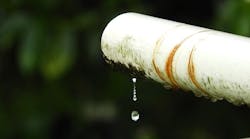EPA, Federal Partners announce winners of Water Quality Challenge
WASHINGTON, SEPT 9, 2019 -- The U.S. Environmental Protection Agency (EPA) with four federal partners announced the winners of a technology-accelerating water quality challenge. This year’s winners demonstrated how data from low cost water quality monitoring sensors can be used to inform local-scale nutrient management decisions.
“To address the challenges of today and the future, we need innovative thinkers at the global- and local-level,” said Principal Deputy Assistant Administrator for Science and EPA Science Advisor Jennifer Orme-Zavaleta. “We commend the ‘challenge’ winners for identifying creative ways to use low-cost tools to understand our resources and better inform nutrient management decisions.”
The Nutrient Sensor Action Challenge is one of a series of challenges focused on nutrient management conducted as part of multi-year collaboration between the EPA, the U.S. Geological Survey (USGS), the U.S. Department of Agriculture (USDA), the National Institute of Standards and Technology (NIST), the National Oceanic and Atmospheric Administration (NOAA), and the U.S. Integrated Ocean Observing System (IOOS).
For this challenge, six teams deployed and collected data from two or more nutrient sensors for at least three months and sought to demonstrate how local communities can use the collected data to inform nutrient management.
The three teams selected for the Challenge’s prize ($50K each) are:
League of Women Voters of Illinois (Jo Daviess County, Ill.), “Direct Data for Farm Nutrient Management” – The team demonstrated how an edge-of-field sensor system could support farmers in reducing nitrogen loss from their fields. The installed sensors provide real-time data to inform management decisions at the farm-scale.
South Platte Water Renewal Partners (Englewood, Colo.), “In-Plant Sensors for Nutrient Management” – This facility is using sensor data to optimize wastewater treatment to meet more stringent nitrogen standards and improve watershed health.
University of New Hampshire (Durham, N.H.), "Impact of Dam Removals on Nitrate Retention" – The team deployed low-cost nutrient sensors to assess amount and timing of nitrate loading associated with dams.
Through prize competitions and other innovative mechanisms, EPA, USGS, USDA, NIST, and U.S. IOOS collectively pursue opportunities to facilitate technological breakthroughs, engage stakeholders, and build a community working together to solve nutrient pollution. The Nutrient Sensor Action Challenge will be used as a springboard for further innovation to reduce excess nutrients in lakes, rivers, and coastal waters.
More information on EPA’s efforts to address excess nutrient is available at https://www.epa.gov/nutrient-policy-data/collaborative-approaches-reducing-excess-nutrients.
